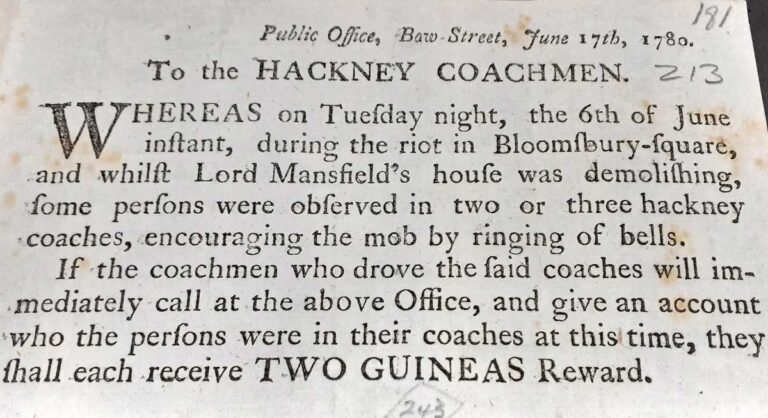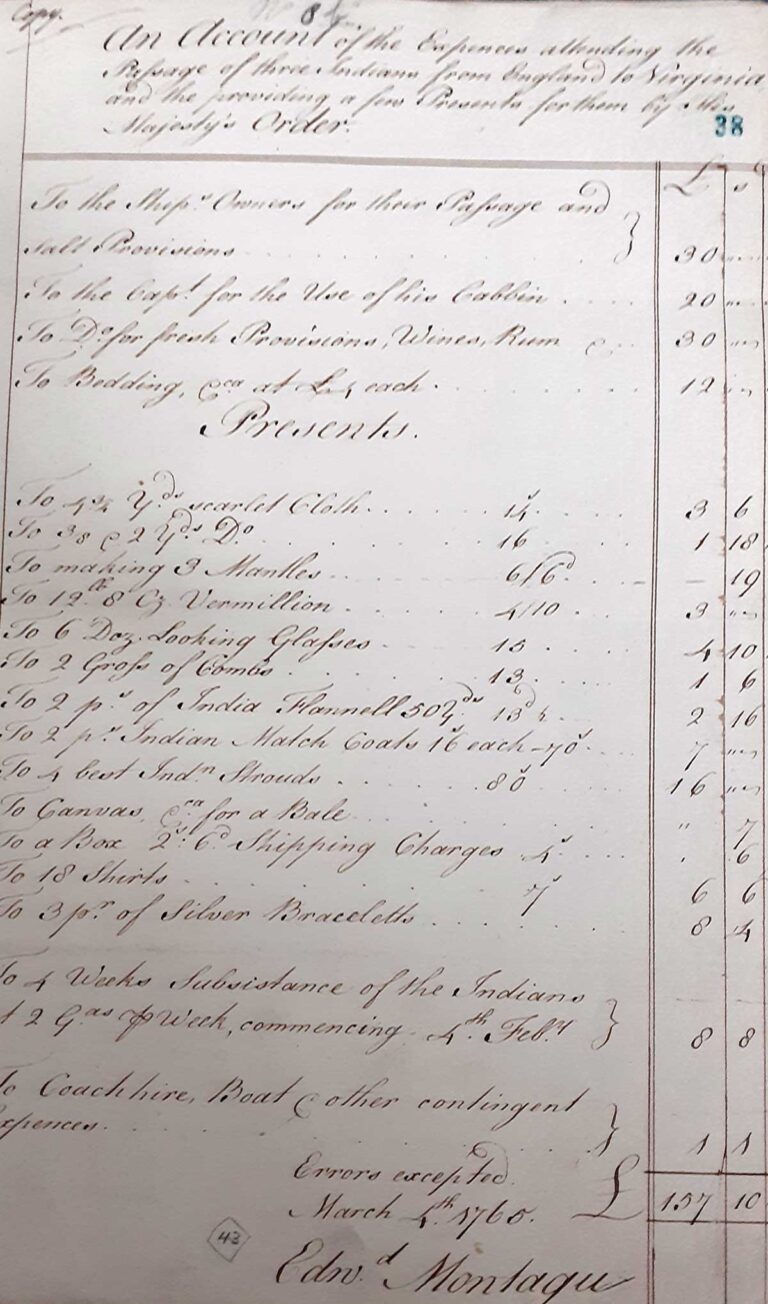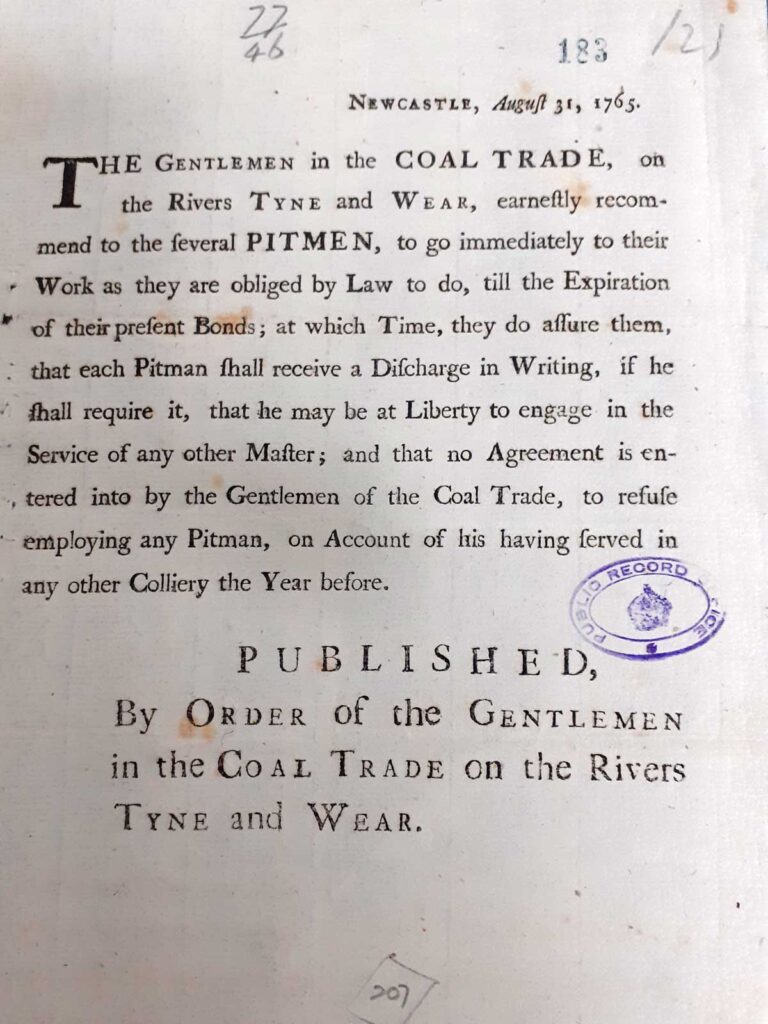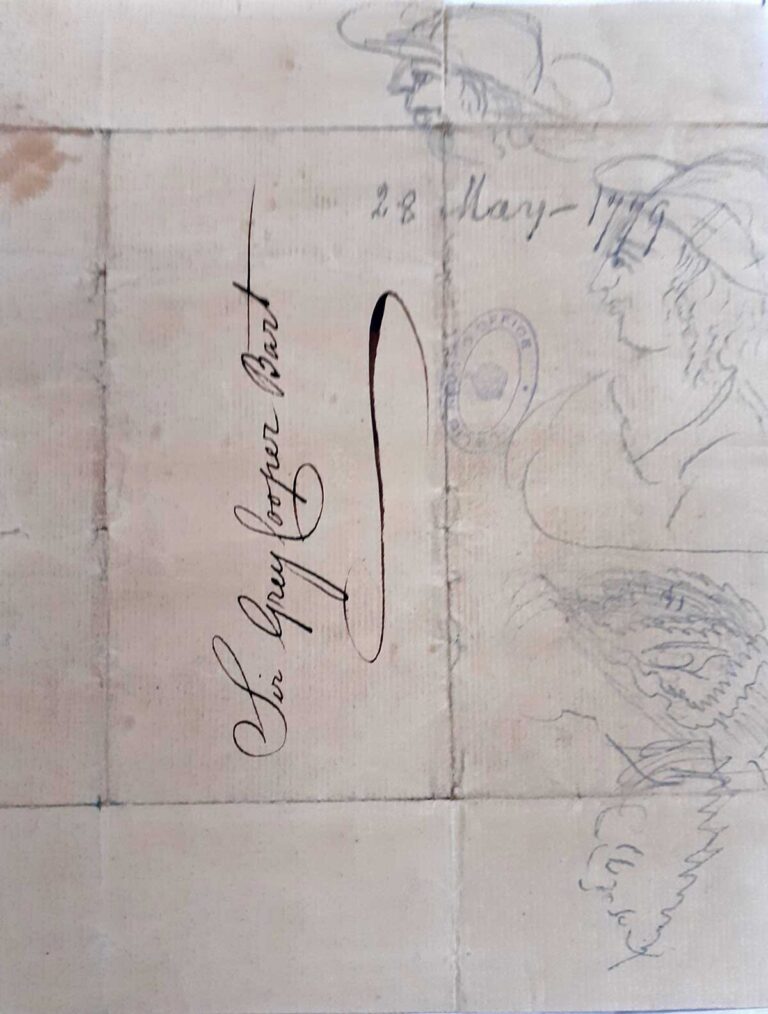How many people did it take to describe 2,749 items for our catalogue, Discovery, and finish nine months ahead of schedule? Just three.
In May 2022, a small team of dedicated volunteers began cataloguing – that is, examining and recording information about – SP 37, called ‘State Papers Domestic, George III’.
It consists of 27 pieces, mainly bound books of letters from 1760 to 1782, about the business of government in the period from King George III’s accession to the end of the State Paper Office. It also contains correspondence dating back to the reigns of William III in 1700 and George I in 1715. While most of the papers are in English, some are in both French and Latin.

The records are extremely wide-ranging. Subjects they cover include:
- Petitions relating to inventions
- Matters of smuggling and excise revenue
- The infamous anti-Catholic Gordon Riots of 1780 (in great detail)
- Colonial trade relations, and the ensuing controversy that would herald the onset of the American Revolutionary War in 1775.

Other stories contained within include the East London silk weaver’s agitation of the 1760s, which resulted from journeymen weavers being forced to accept lower wages and mechanical weaving ‘engines’ being introduced. There is also a verbatim transcript of the parliamentary inquiry into Commander-in-Chief Sir William Howe’s conduct in North America.
Some of the more revealing material includes, for instance, the deposition of Peter Child, staymaker of Essex Street, Middlesex, reporting on an alleged plot of December 1760 to assassinate the King at Kew Palace. There are also the bellicose protests of the fictitiously named ‘Arthurius Hibernicus Kilkeniensis’ against the treatment of George’s sister Princess Carolina Matilda in 1772, by her husband Christian VII of Denmark-Norway.
Matters of foreign diplomacy and international trade are also covered, such as this list of expenses for a delegation of three South Carolina Cherokee Indian chiefs travelling back to Virginia from their visit to England:

Also newly-catalogued are the reports on the freeing of almost 200 Portuguese captives held at Algiers in August 1777 by the British consul, the Honourable Robert Walpole. Further material from the late 1770s includes East India Company correspondence relating to events in Bengal under Governor-General Warren Hastings at Calcutta.
This period was also the time of the early Industrial Revolution in Britain, which is highlighted throughout the collection. A time of transition, the papers described include a variety of material about transport and technical innovations including:
- The ‘four wheeled people carrying machine’ design of Samuel Woodhouse of Bath in 1760
- The 1772 petition from Holland Cooksey of Horton, Buckinghamshire proposing a plan for making a navigable canal from Isleworth to Maidenhead Bridge
- The Fleet Street optician Benjamin Martin’s 1766 invention of a hydraulic pump for the raising of water in ships and mines
- The improved method ‘for making pig iron malleable in a reverberatory air furnace with raw pit coal’ devised by the Cranage brothers, ironmasters of Coalbrookdale, Shropshire’ in 1767.
They also include this paper from Newcastle upon Tyne:

Ultimately the repercussions of the distant American War are also reflected within the series, for example in the report of John Paul Jones’s daring 1778 ‘patriot’ privateering raid on Whitehaven, Cumberland.
It includes despatches celebrating the defence of Jersey and the defeat of the French expeditionary force in 1781, and addressing the long-drawn-out Franco-Spanish ‘Great Siege’ of Gibraltar of 1779 to 1783.
Another intriguing item features John Baldwin’s sketches, part of his deposition against the dockyard incendiarist ‘John the Painter’, possibly drawn in 1777 while he was incarcerated in the New Prison, Clerkenwell:

Many thanks to the excellent volunteers who completed this project, and to The National Archives’ Cataloguing and Taxonomy Department for their continuing help and advice. Such valuable work helps unlock the hidden potential of our archives for historians and the public alike.
Actually for most of the project it was two.
I have such a document. And am trying to find anyone able to authenticate it
Dear Ted,
Thank you for your comment.
For help with this, please use our live chat or online form.